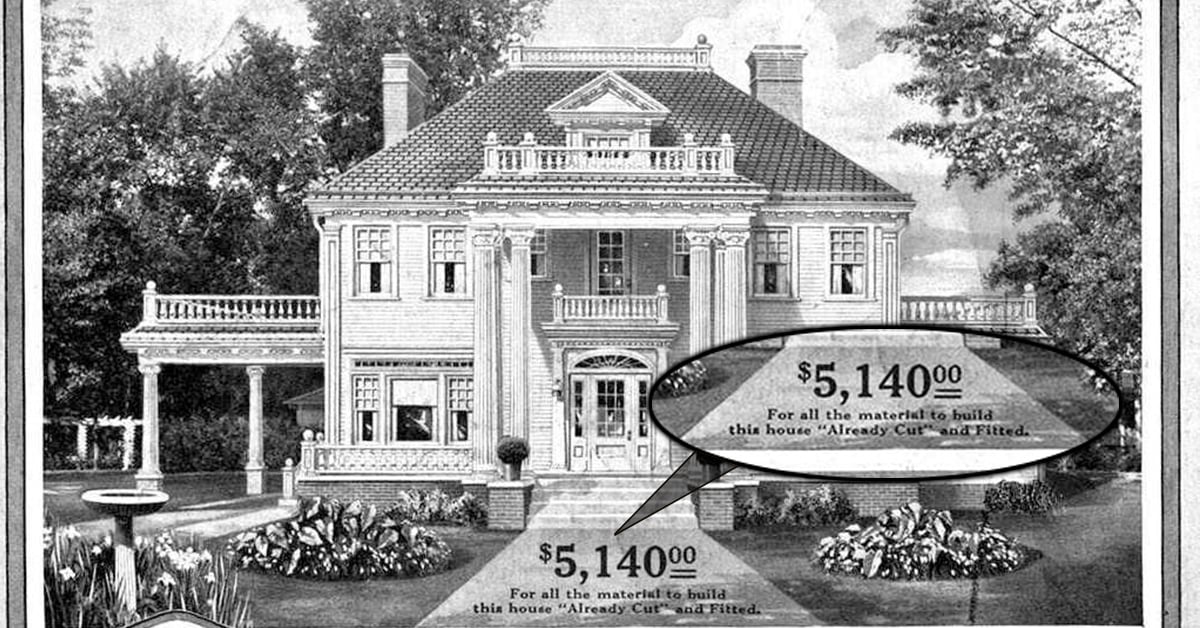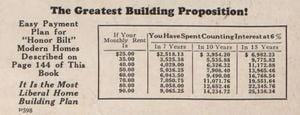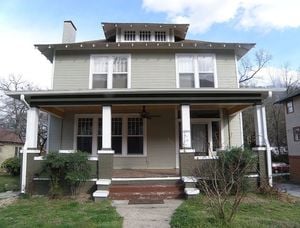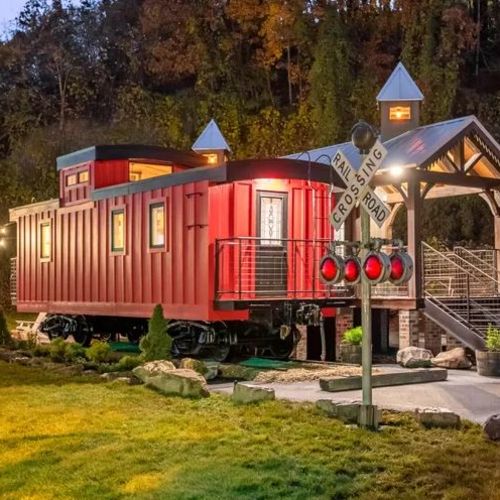Do you live in a Sears Kit Home? Between the years 1908 and 1940, the Sears Modern Homes program revolutionized the housing market by offering 447 distinct house varieties that could be customized and ordered through their catalog. It is estimated that approximately 70,000 of these kit homes were sold to eager buyers. Remarkably, even today, around 70 percent of these Sears kit homes still stand, a testament to their enduring quality and the lasting impact they have had on American communities. These remarkable architectural gems have left an indelible mark on the American landscape, offering affordable and convenient housing options. In this article, we’ll delve into the rich history of Sears kit homes, and provide insights on how to identify these unique dwellings.
Part 1: The History of Sears Kit Homes
To understand the context in which East Tennessee kit homes emerged, we first delve into the history of these homes. As mentioned in the Craftsman Blog’s article on the history of Sears kit homes, Roebuck and Company (Sears) played a pivotal role in the early 20th-century housing industry. Sears kit homes, introduced in 1908 and available until 1940, provided affordable housing options to Americans across the country. Once ordered, the homes were shipped via train car and delivered as far as Alaska. These far-reaching effects were owed to the catalog’s great acclaim. The convenience of mail-order catalogs contributed to the popularity of these homes.
Part 2: The Emergence of East Tennessee Kit Homes
Kit homes emerged as a significant player in the housing market. These homes embraced various architectural styles and catered to the growing demand for affordable housing. By 1939, the sales of Sears kit homes had reached an impressive milestone, with approximately $7 million worth of homes sold. The success of the Modern Homes department was evident as it expanded to include 120 dedicated salespeople operating from 16 district sales offices. However, the onset of World War II in 1942 marked the end of this thriving enterprise. The demand for lumber skyrocketed due to wartime preparations, surpassing the available supply. Unfortunately, the production of Sears kit homes could not keep pace with the overwhelming demands, leading to the discontinuation of the program.
“Honor Bilt” Modern Homes Digital Archives
View a pdf of an original 1920’s magazine here:
https://digital.hagley.org/s4391926_031714#page/1/mode/2up
It’s fascinating to see how times have changed since the early 1900s. However, as the years progressed, various factors such as inflation, increased demand, and rising construction costs have led to substantial price appreciation in the housing market. Additionally, economic fluctuations, housing booms, and regional dynamics have influenced price fluctuations in different periods. In recent years, factors like low housing inventory, population growth, and increased construction costs have driven home prices upwards in many areas. According to the Honor Bilt Modern Homes Book, it says “Our interest charge is only 6 percent. Payments are from $15.00 to $75.00 per month.”
Part 3: Identifying East Tennessee Kit Homes
To identify Sears kit homes, we can draw upon the techniques outlined in the WikiHow guide on identifying Sears kit homes. While Sears kit homes are widely known, they can sometimes be mistaken for other homes due to their similar characteristics.
Identifying Features:
- Architectural Elements: Kit homes often showcase distinctive architectural details, such as gabled roofs, decorative brackets, and exposed rafter tails, reflecting the prevailing architectural styles of the time.
- Floor Plans and Layout: Comparing a home’s floor plan and layout to designs featured in Sears catalogs or known East Tennessee kit home plans can provide valuable clues.
- Construction Materials and Markings: Sears kit homes utilized standardized materials. Examining construction materials and searching for identifying marks or stamps can help confirm their origins.
According to Boston.com, “Most kit homes are within 2 miles of railroad tracks and in communities with streets named after presidents and trees. “Those are the communities developed in the 1920s,’’ Thornton said. And while Sears sold the homes for 32 years, the bulk of them were built between 1919 and 1930. So, she added, “If your house wasn’t built in that time frame, it’s not likely a Sears home. And if you’re outside of 1908 to 1940, it’s impossible.’’
A useful resource from inspectapedia.com shows how to identify Sears homes. Daniel Friedman has inspected and identified Sears catalog homes in the Hudson Valley of New York, and has included additional identification tips and photos with this article.
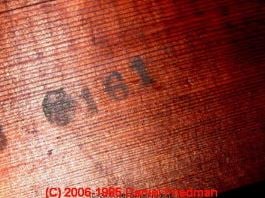
ATTIC LUMBER STAMP PHOTO: INSPECTAPEDIA.COM
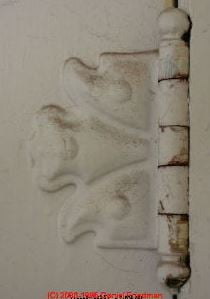
Sears DOOR HINGES PHOTO: INSPECTAPEDIA.COM
Sears Kit Homes in East Tennessee
The No. 118 Sears Kit Home was priced at $1,477 in the 1912 Sears Modern Homes catalog According to realtor.com, “This two-story home, model No. 118 in the catalog, in Thorn Hill, TN, sold in 2020 for $270,000. The two-bedroom, two-bathroom home sits on 19 acres of along War Creek. The home is about an hour outside of Knoxville and 20 minutes from Morristown. Built in 1917 this home was ordered from the 1917 Sears and Roebuck Catalog.
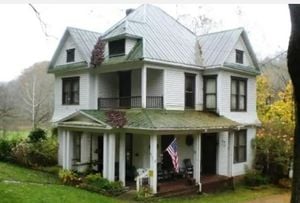
Sears #118 – Thorn Hill, TN PHOTO: oklahomahousesbymail.wordpress.com

Sears #118 – Thorn Hill, TN – New Renovated PHOTO: REALTOR.COM
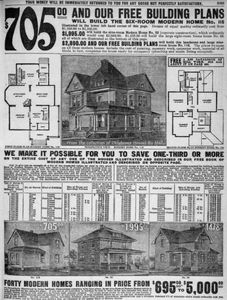
The Sears #118 PHOTO: oklahomahousesbymail.wordpress.com
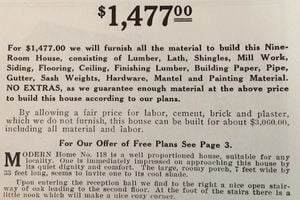
About the No. 118, from the 1912 Sears Modern Homes catalog. PHOTO: searshouseseeker.com
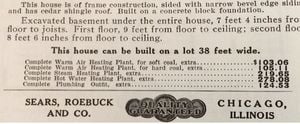
From the 1912 Sears Modern Homes catalog PHOTO: searshouseseeker.com
Known as the Corona this house was sold as a kit in the Sears & Roebuck catalog between 1915 and 1922. It was part of the selection known as “Honor Built” which were the most expensive and finest quality homes sold by Sears. It is located in Maryville Tennessee. Corona was originally priced at $1,480 and went up to $2,647. This house just sold for $413,000 in May 2023.
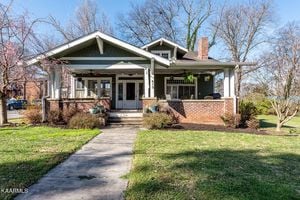
Sears Kit Home – Maryville, TN PHOTO: COMPASS.COM
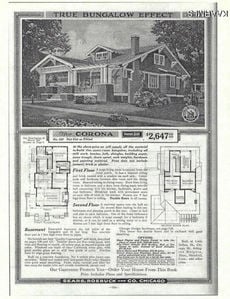
Original AD PHOTO: COMPASS.COM
According to thetimesfreepress.com “The majority of Sears’ homes were in the Midwest. However, as a railroad hub, Chattanooga and the surrounding areas were ideal for shipping and transporting the materials. Local historian LaVonne Jolley states her father, Horace Collins of Collins Brothers Construction Co., built a number of Tudor-style Sears homes on Lookout Mountain and Missionary Ridge in the 1920s and 30s. A number of the bungalows in St. Elmo could be Sears’ homes as well as others in the Highland Park and the Belvoir-Germantown Road neighborhoods.
If you suspect you have or know someone who has a Sears home, look for several clues, including the Sears name stamped on millwork. The Chattanooga Public Library has two excellent books on the company’s homes: “Houses by Mail,” by Cole Stemnson and H. Ward Jandal and “The Houses that Sears Built” by Rosemary Thompson.
Conclusion: Unveiling the legacy of Sears kit homes takes us on a captivating journey through American architectural history. These affordable and convenient housing options continue to intrigue homeowners and history enthusiasts. By understanding their unique features and employing identification techniques, we can recognize and preserve these remarkable homes within our communities.
So, as you stroll through neighborhoods adorned with architectural treasures, keep an eye out for Sears kit homes. Each house tells a story, weaving together the threads of history, craftsmanship, and the dreams of those who called these houses “home.” Let us cherish these dwellings and become custodians of their legacy.
(Note: This blog is a creative piece inspired by the provided articles. The content is not an exact replication of the original sources but an original composition based on the knowledge gained from them.)
Check out our latest show!
Join Ryan Coleman of Hometown Realty as he shares valuable insights and tips on investing in Knoxville’s real estate market. Whether you’re a seasoned investor or just starting out, this video is packed with information that will help you navigate the market and make informed decisions. From understanding local trends to identifying the best neighborhoods, Ryan covers it all. Don’t miss out on the opportunity to learn from one of the best in the business! Be sure to like/subscribe https://www.youtube.com/@RyanColemanHometownRealty/
Click here for links to our Radio Show!
Check your home’s value by visiting our free home valuation tool here: What’s my home worth
Hometown Realty is a Proud Sponsor of the Tennessee Volunteers:
As Tennessee’s Realtor®, we are proud to partner with the University of Tennessee’s athletic program each year. Our partnership with UT athletics is a powerful way for us to align our brand with the community pride and passion that surrounds this beloved institution. By supporting UT athletics, we demonstrate our commitment to not only providing exceptional real estate services but also investing in the success and growth of the community we serve. Overall, our partnership with the University of Tennessee’s athletic program allows us to give back to the community we are proud to call home.
Did you know we are giving away free tours of the Tennessee Athletics Departments at UT? If you are one of our great clients give us a call to set up an exclusive VIP tour! For more information visit the VIP TOUR page! This is completely free, we want to give back to our awesome clients & potential clients!


